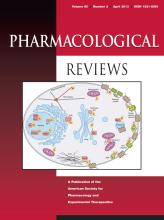Abstract
Studies of inositol polyphosphates in the pancreatic β-cell have led to an exciting synergism between new discoveries regarding their cellular roles and new insights into β-cell function. Because the loss or malfunction of the β-cell is central to diabetes, these studies open the possibility of new pharmacological interventions in a disease that has reached epidemic proportions worldwide. Using the β-cell as our prime but not exclusive example, we examine the inositol polyphosphates in three main groups: 1) inositol 1,4,5-trisphosphate and its influence on Ca2+ signaling, specifically in a cell in which cytoplasmic-free Ca2+ concentration is principally increased by plasma membrane standing voltage-gated Ca2+ channels; 2) higher inositol polyphosphates including a novel second messenger inositol 3,4,5,6-tetrakisphosphate and a regulatory role for inositol hexakisphosphate in β-cell Ca2+ homeostasis and exo- and endocytosis; and 3) inositol pyrophosphates and their role in β-cell exocytosis, together with the exciting possibility of being novel targets for therapy in diabetes. We conclude with some of the new perspectives that are likely to become apparent in the next few years.
Footnotes
This work was supported by Karolinska Institutet; Novo Nordisk Foundation; the Swedish Research Council; the Swedish Diabetes Association; EFSD; The Family Erling-Persson Foundation; Stichting af Jochnick Foundation; Berth von Kantzow’s Foundation; Torsten and Ragnar Söderberg’s Foundation; the Knut and Alice Wallenberg Foundation; VIBRANT [Grant FP7-228933-2]; Skandia Insurance Company, Ltd.; and Strategic Research Program in Diabetes at Karolinska Institutet and the World Class University program through the National Research Foundation of Korea funded by the Ministry of Education, Science and Technology [Grant CR31-2008-000-10105-0].
Financial disclosure: P.-O. Berggren is co-founder of BioCrine AB. C.J. Barker acts as a consultant to BioCrine AB.
- Copyright © 2013 by The American Society for Pharmacology and Experimental Therapeutics
PharmRev articles become freely available 12 months after publication, and remain freely available for 5 years.Non-open access articles that fall outside this five year window are available only to institutional subscribers and current ASPET members, or through the article purchase feature at the bottom of the page.
|






